
For centuries, people have speculated and argued about sightings of the Loch Ness Monster. The Loch Ness Monster (also known as "Nessie") is an alleged sea creature believed to live in the depths of Scotland's Loch Ness lake. Today on "Uncovering Mysterious Legends and Lore," we'll take a closer look at this well-known Loch.
Despite never being definitively proven, numerous credible sightings of this mythical creature have made it a source of fascination for many. Here are some key points to consider when researching Loch Ness Monster sightings:
The Origins

The Loch Ness Monster's Mysterious Origins
Tales of strange creatures lurking in Scotland's deep and mysterious lochs have been told since the dawn of time. The Loch Ness monster is unquestionably one of the most famous monsters in history.
The entomology behind its name - "loch" - is frequently overlooked.
The term "loch" simply means "lake" or "loch" in Scottish Gaelic. The word can be traced back to Old Irish "locha," which was derived from Proto-Celtic *lewkos. This linguistic history reveals that native Scots have recognized the deep body of water known today as Loch Ness since ancient times.
But why is this important? Understanding the historical context of a phrase can help us understand how people first perceived an object, such as a lake full of unknown creatures. In other words, by understanding how far back "loch" goes, we gain perspective on how long ago Scots may have noticed something unusual happening in their bodies of water and speculated about its source.
Whether you believe in the existence of Scotland's famous monster or not, it is undeniable that delving into its entomological roots can be a fascinating journey into the past. Understanding where the word "loch" comes from helps us understand why stories about strange creatures living in lakes are still popular today, from uncovering ancient language to piecing together local folklore.
Although sightings have occurred throughout history, it wasn't until 1933 that an image appeared that piqued the public's interest in this enigmatic being.
The first known sighting was in 565 AD, when Saint Columba, a Christian missionary sent to Scotland, was said to have encountered a large water beast while crossing the River Ness near Inverness. Despite the initial fear among his companions, Columba commanded the beast to retreat, and it miraculously obeyed. This is one of the earliest documented accounts of what became known as "Nessie," a nickname given by locals that has endured for centuries.
In the years since, there have been numerous reports from witnesses who claim to have seen something strange in or near Loch Ness. Most described a long-necked creature that resembled a reptile, but no compelling evidence could be found until 1933, when an infamous photograph captured an aquatic animal with a long neck emerging from the murky waters of Loch Ness. Though widely dismissed as a forgery or misinterpretation of natural phenomena, this image served as both inspiration and a reminder that something mysterious may still exist deep beneath the earth's surface today.
Since then, there has been a lot of speculation about possible explanations for these sightings, which range from misidentification of ordinary animals like otters or seals to surviving dinosaurs like plesiosaurs and even extraordinary paranormal activity like ghostly apparitions or extraterrestrials. Whether true or not, stories about this legendary creature continue to captivate people all over the world, making "Nessie" one of Scotland's most enduring legends.
Modern Sightings
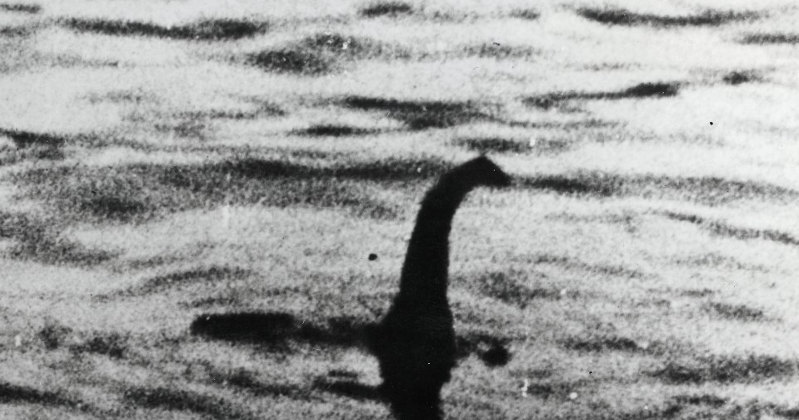
The Surgeon's Photo and the Resurgence of Loch Ness Monster Sightings
Sightings of the enigmatic Loch Ness Monster have captivated audiences all over the world since the 1930s. With the exception of a few fringe believers, many dismissed the "Nessie" phenomenon as a myth. Until 1933, when a London surgeon named Robert Kenneth Wilson made a surprising discovery.
Wilson captured what he described as "the closest approach to a dragon or pre-historic animal that I have ever seen"* on film while on an expedition to find evidence of any living creature in Scotland's Loch Ness. This photograph, dubbed "the Surgeon's Photo," sparked renewed interest in discovering what might be lurking beneath the surface of Loch Ness.
Soon after its release, newspapers across the United Kingdom carried articles about the Surgeon's Photo, as well as reports from other witnesses who claimed to have seen something large swimming near Urquhart Castle on the loch. People were drawn to this remarkable image in particular because it appeared to capture something extraordinary beneath the water's surface. In addition to being credited with reigniting public interest in this legendary creature, this photograph has become one of the most iconic images associated with Nessie mythology.
Despite numerous attempts by researchers over several decades to prove conclusively that an ancient monster does indeed inhabit Loch Ness, no absolute proof has yet been discovered. Nonetheless, new technology and growing curiosity are bringing us closer to learning more about this enduring aquatic legend.
"The Surgeon's Photo," Robert Kenneth Wilson's Enduring Legacy
Robert Kenneth Wilson was the doctor who took "the Surgeon's Photo," a legendary photograph of the Loch Ness Monster. The iconic photograph was taken on April 19, 1934, and its authenticity has been the subject of much debate over the years. However, many people are unaware that Wilson took the photograph, and his story is truly remarkable.
Wilson was born in 1882 in London to an upper-middle-class family. He went to the University of Edinburgh to study medicine before returning to London to work as a general practitioner. Despite his success in this field, he had another passion: natural history. Wilson was particularly fascinated by cryptids, which are mythical creatures such as Bigfoot and the Loch Ness Monster that are said to inhabit specific areas around the world.
In 1933, he decided to travel to Scotland in the hopes of photographing one of the mythical creatures said to live in Loch Ness Lake. His efforts were rewarded when he captured "the Surgeon's Photo," which became one of the most famous images associated with Nessie sightings. Despite numerous debates over its veracity, one thing is certain: without Robert Kenneth Wilson's dedication, we would not have this incredible piece of history today!
Aside from its legendary status as proof of an unidentified creature living in Loch Ness, "the Surgeon's Photo" is also a testament to Wilson's lifelong dedication to science and exploration. His legacy continues today through television shows featuring monsters such as "Finding Bigfoot" or even blockbuster films like "Jurassic Park". So, the next time you hear the phrase "the Surgeon's Photo," remember Robert Kenneth Wilson—the man who captured our imaginations with this enduring mystery!
Scientific Investigations
Various scientific expeditions, including Operation Deepscan, have been launched over time in an attempt to uncover more evidence regarding these encounters with unknown creatures in the lake (1987). Unfortunately, none of these investigations were successful in proving or disproving any theories about life living beneath the ocean's murky depths.
Various scientific expeditions have been launched in an attempt to uncover more evidence about what might be lurking beneath the surface. The most notable instance was Operation Deepscan in 1987. This expedition used twenty-four boats outfitted with fifty sonar beams to scan the entire length of the loch at the same time. Unfortunately, this investigation was unable to provide concrete evidence or disprove any theories about life in Loch Ness.
Other attempts to investigate these mysterious events have occurred since then. Over 160 volunteers took part in a conservation project in 2018 that used underwater cameras to film the loch bottom and track movement within it. However, no definitive answer has been discovered as to whether or not there is something living in the deep waters of Loch Ness, leaving many questions unanswered and much speculation unresolved.
For the time being, it appears that we will have to wait and see if further investigations into this phenomenon reveal anything more about the mysteries that lie beneath Scotland's Loch Ness Monster.
Popular Culture Phenomenon
For centuries, reports of strange sightings in Scotland's most famous lake have piqued the interest of people all over the world. It's no surprise that the Loch Ness Monster (or "Nessie"), a mysterious aquatic creature, quickly became an internationally recognized figure. While people are divided on whether or not such a legendary beast exists, one thing is certain: its place in popular culture has grown steadily over time.
Books, films, and even theme park attractions have been created to further explore and celebrate the legacy of this mythical creature, adding to its mysterious appeal and fueling curiosity about these unique sightings at Loch Ness. Even though various research efforts over the years have never been able to conclusively prove Nessie's existence, enthusiasm has not waned.
In fact, one could argue that this cultural phenomenon has become firmly ingrained in our collective imagination, providing us with an exciting opportunity to discover something extraordinary down by the banks of this famous Scottish loch. As we continue our search for answers, it appears that stories about Nessie will live on in the hearts and minds of future generations.
Overall, it appears unlikely that we will ever find conclusive proof that the legend lives on at the bottom of Loch Ness, but that hasn't stopped us from wanting answers about this centuries-old mystery, which is just as fascinating today as it was five hundred years ago!
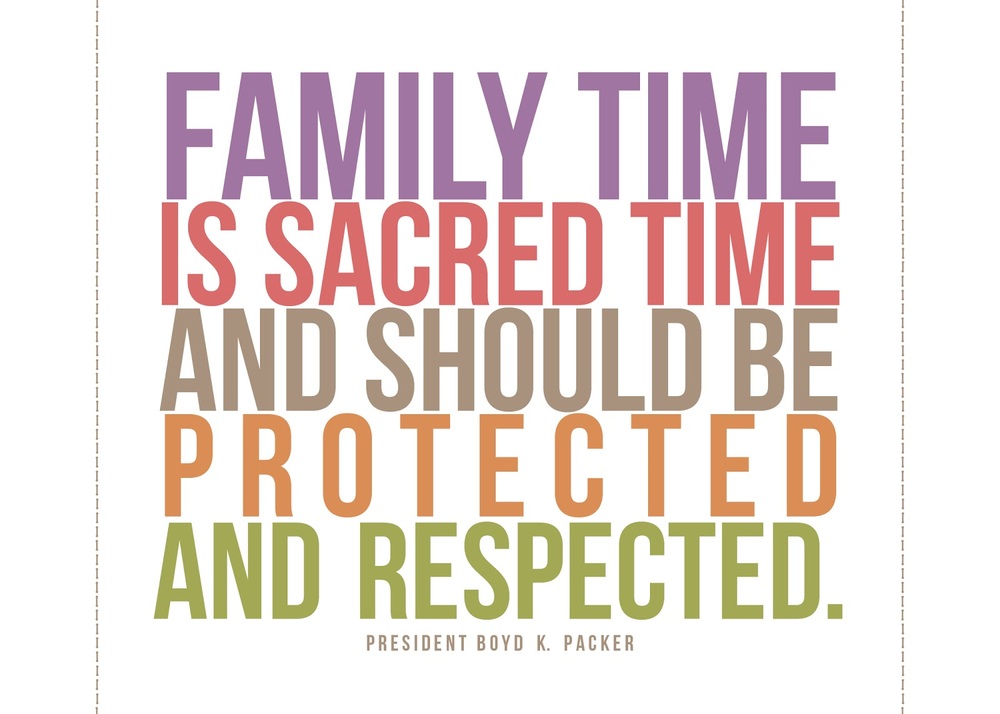
In the last few years, I've become big on family mealtime. Sometime ago I was hit with the realization that we really weren't eating as a family anymore. My husband would often cook for the children when he got home, and I, I had either grabbed a bite while I was working or would pick around in the leftovers before soaking in a hot bath. This wasn't optimal, because a few years before that we were still eating as a family. I missed it, and our family was missing out.
Benefits for Every Member at the Table
It can be difficult for many families to spend quality time together as their schedules become increasingly hectic. While family movie nights and game nights are fun ways to bond, there is an even easier way to share moments with your family every day - eating meals together! According to studies, when families eat meals together, they reap numerous benefits in terms of physical health, mental health, and social connections.
Physical Health Advantages of Sharing Meals
Family dinners can be beneficial to the health and well-being of all family members, not just the children. According to research, children who eat dinner with their parents on a regular basis are healthier overall. Families who share meals together are more likely to consume a balanced diet than those who eat alone. According to one study, children who ate family dinners ate twice as many fruits and vegetables as those who skipped these shared mealtimes. Furthermore, teens who attended regular family dinners were less likely to engage in risky behaviors such as smoking, drinking alcohol, or using drugs.
Eating family dinners is not only a great way to connect with your loved ones, but it also has significant physical and mental health benefits. These shared meals not only provide an opportunity for family members to converse and bond, but they also provide an opportunity to nourish the body with healthy foods and avoid potentially dangerous behaviors such as substance abuse or smoking. So, the next time you have the opportunity to share a meal with your family, take it!
Mental Health Advantages of Sharing Meals
You can't deny that family mealtime is an important part of family life for our physical and mental well-being. Not only does it provide an opportunity to enjoy good food together, but there are numerous other advantages to sitting down and sharing a meal as a family.
One reason for sharing a meal as a family is to help children develop their communication skills. During mealtimes, children can practice talking about anything from their school day to current events. This helps them develop their ability to express themselves as well as confidently ask questions and make comments. It's also an opportunity for adults to model social cues like taking turns speaking, actively listening, and responding appropriately.
Sharing meals together can be beneficial on an emotional level in addition to the educational value. Sitting down at the dinner table allows for meaningful conversations between all parties involved, which can aid in the development of trust and understanding among family members. Mealtime allows everyone to connect on topics they wouldn't normally discuss during their daily routines, such as discussing dreams and aspirations, sharing memories, or seeking advice—all while enjoying delicious food!
Finally, feeling connected to one's family through shared meals promotes happiness and self-esteem. When children feel like they belong in their families, they develop a positive self-image, which can have a long-term impact on their mental health and wellbeing.
Overall, family mealtimes provide numerous benefits that go beyond physical nourishment; they allow for the development of new language skills, emotional connections with loved ones, and a sense of belonging to the family. So don't underestimate the power of a family dinner—it could be the key to overall happiness!
Social Connection Benefits of Sharing Meals
Family dinners are an excellent way to bring families together and allow them to bond. They not only provide a fun and stress-free way to catch up on each other's lives, but they also allow for meaningful conversation about current events and cultural topics. Parents can help foster values such as respect, acceptance, and cooperation in their children by sitting down with them and discussing such topics.
One reason why family mealtime is so important is that it allows children to explore different points of view. It could be anything from political debates to philosophical questions—the important thing is that it allows children to think critically in a safe environment free of judgment or ridicule. Parents can help their children understand how their own behavior affects society at large through thoughtful discussion, assisting them in developing a sense of responsibility toward others.
In addition, studies have shown that spending mealtime together as a family helps strengthen the bonds that exist within that family. Sitting down for dinner allows parents to check in with their children about how school is going or what happened at practice, while also providing much-needed quality time with only family members present. Furthermore, when compared to those who rarely eat with their families, having regular family meals may even reduce the risk of teens engaging in undesirable behaviors such as substance abuse or skipping class.
While sharing a meal may appear to be just another task in our already hectic schedules, it is actually a valuable experience for both parent and child. So, the next time you sit down for dinner with your family, remember the potential benefits of truly connecting over food!
In spite of the hectic pace of modern life, it is essential for us to make time for some kind of daily shared activity – preferably one that involves food! It doesn't matter whether you eat breakfast or dinner; what is important is that you take advantage of these meal times so that every member of your household can reap the associated benefits in terms of their physical health, mental health, and social connection!

My DH teases me in regards to me approaching the Big 4-0. He is three years my senior, so he has his behind him. Turning forty can be intimidating, but it doesn't have to be. It is a significant life event that is frequently viewed as an opportunity for personal growth and reflection. This birthday can be celebrated with joy and excitement if the right attitude is adopted! Here are some suggestions for approaching forty and making the most of this special occasion.
Examine Your Achievements
Age 40: Reflect on Your Achievements and Challenges
Turning 40 is a significant life milestone, and it's an ideal time to reflect on where we've been. Taking stock of our accomplishments throughout our lives can help us develop self-confidence and a sense of pride. It also shows us the difficulties we've faced and how far we've come.
Thinking about everything that has happened over the last four decades can be overwhelming, so try breaking it down into smaller chunks. Begin by simply reflecting on successes and accomplishments from each decade, from childhood to the present. These could include educational milestones, job advancements, financial growth, hobbies or sports participation, new friendships, or any other accomplishments you are proud of.
Once you've identified these, consider what challenges you overcame during each stage of your life. Perhaps you had to deal with difficult family situations or medical issues; perhaps you had financial setbacks or relationship problems; or perhaps you struggled with personal confidence or mental health. Whatever these challenges were, big or small, remember how strong and resilient you were throughout!
Which of your experiences has brought you the most joy? Which ones taught you important lessons? And which ones shaped you into the person you are today? By asking ourselves these questions, we encourage a more mindful approach to turning 40, one that is filled with gratitude for all that we have accomplished thus far.
So, as you celebrate your 40th birthday, think about everything you've accomplished and all the challenges that have made you stronger. Celebrate what makes you unique and proud - be proud of who you are!
Explore New Interests
Take Advantage of the Opportunity to Try Something New!
It can be a good time to reflect on our achievements, what we've been through, and what lies ahead. As a new chapter in your life begins, this could be the ideal time to start something new or tackle activities that you've always wanted to try but never got around to doing.
Learning a language is an excellent way to broaden your horizons and create new opportunities, both professionally and personally. Whether you want to learn Spanish, French, Chinese, or any other language, there are tons of online courses and tutors available these days that make getting started simple and enjoyable! If learning a full language isn't for you, why not just learn a few key phrases? You'll be surprised at how fast you can pick them up!
If languages aren't your thing, perhaps music is. Learning an instrument can be extremely rewarding, and nowadays all you need is an internet connection, a laptop or tablet, and some online tutorials. Even if you don't want to perform on stage one day, being able to play your favorite songs with family and friends is something to strive for!
Joining a gym or participating in regular exercise classes may not sound like the most exciting thing on the list, but it can make all the difference in terms of having more energy, improving mental clarity, and staying motivated. Getting in shape does not have to be done alone; why not see if any friends or family members would like to join you?
Volunteering in your local community is a great way to meet people with similar interests while also making a real difference in someone else's life. There are numerous ways to get involved, such as working with children in schools or volunteering at animal shelters, so why not give it a try?
As we approach this new milestone age, let us look forward rather than back, seizing every opportunity that comes our way. Whether it's learning a language, playing an instrument, joining a gym, or volunteering in our community, now could be the ideal time to start!
Celebrate with Family and Friends
A Gathering of Family and Friends Can Ease the Transition
Turning forty is a watershed moment that denotes one's wisdom and maturity. Rather than dreading it, enjoy this special occasion with the people who mean the most to you. Surround yourself with those who have supported and loved you throughout your life's journey - what better way to mark this historic occasion?
Bring your closest family and friends together for an unforgettable evening filled with joy, laughter, and lots of memories. Whether you plan a formal dinner party or a casual get-together, make sure to include details that reflect your personality and style.
Send out creative invitations to entice your guests to join in the fun! Incorporate meaningful elements into your decorations, such as photos of special memories in your home or life. Also, don't forget to thank everyone who came by providing thoughtful party favors that will remind them of how much fun they had.
Finally, find ways to commemorate this occasion during the gathering itself. Cutting into a festive cake topped with 40 candles or toasting with champagne are both excellent ways to commemorate turning forty! It's also nice to add more personal touches, such as crafting speeches from close friends and heartfelt messages from distant relatives, all of which can be shared via Zoom or Facetime if necessary.
When you turn forty, it's important to reflect on how far you've come both personally and professionally. Gather the people who mean the most to you and celebrate in style; after all, nothing else compares!
Make Time for Self-Exploration
The Advantages of Devoting Time to Yourself
It can be difficult to find time for yourself as we get older and our lives become more hectic. We often don't give ourselves enough "me time" because work, family responsibilities, and other commitments take up so much of our time. However, taking time away from our daily obligations is essential for finding balance and staying motivated in life.
When you reach the age of 40, it's critical to recognize the value of self-care and make it a priority. According to research, taking regular breaks is essential for reducing stress and increasing productivity. Taking a break does not always imply going on vacation or spending money; something as simple as reading a book or spending an afternoon at home can do wonders for our mental health.
It is also beneficial to disconnect mentally from social media and technology for short periods of time, in addition to physically taking a break from our daily lives. Setting aside 30 minutes per day without using our phones or tablets allows us to focus on ourselves without all of the noise that comes with being constantly connected. This can help clear your mind and give you more clarity about problems you may be facing in your daily life.
As we get older, it becomes even more important to make time for ourselves, whether it's through small breaks throughout the day or longer trips away from daily routines. This will not only keep us happy and healthy, but it will also provide us with renewed energy and motivation to face all of life's challenges head on.
Accepting Change Through Self-Reflection and Renewal
Turning forty is a significant life milestone, often accompanied by feelings of dread, excitement, and anticipation for what lies ahead. It's a time to reflect on our accomplishments and missed opportunities, to consider how far we've come since turning thirty or twenty, and to consider where we want to go from here. As we approach retirement age, we have an opportunity for growth and renewal; it is critical that we take the necessary time for self-reflection during this pivotal chapter of our lives.
It's easy to become overwhelmed by worries about aging, but approaching the milestone with optimism will open up new avenues for personal growth. Take some time to reflect on your relationship with yourself and others - have your values changed in the last decade? How has your perspective on success evolved? Now could be a good time to revisit goals that have been put on hold due to work or family obligations.
Allow yourself to make mistakes without judgement or regret during this period of transition; it's okay if things don't go as planned! Forty also provides an opportunity for stress reduction; consider mindfulness practices such as yoga, breathing exercises, or meditation to help reduce anxiety levels. Taking up hobbies or exploring new interests are also excellent ways to focus on self-care activities in order to relax and unwind from daily work obligations.
Remember that each day brings with it endless possibilities as you embrace the change at forty; use this time to get closer to who you truly are while allowing yourself room for creativity and exploration. Aim high while remaining mindful of your limits; direct your energy toward projects that bring you joy while establishing boundaries with those around you so that your needs are met without jeopardizing your personal well-being. Finally, move forward with confidence, knowing that you will be able to arrive prepared wherever life takes you next.
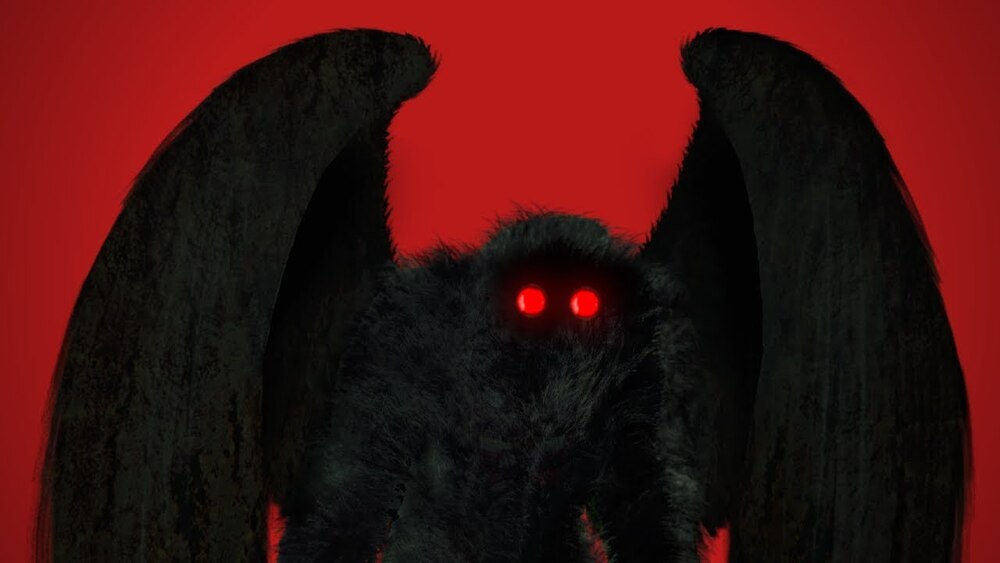
Mothman has become a cryptid shrouded in myth and mystery, but what is the true story behind this cryptid? In this entry into my "Uncovering Mysterious Legends and Lore", we'll look at Mothman myths to learn more about this enigmatic figure.
Let's start by looking at where these myths originated. On November 15th, 1966, five gravediggers reported seeing a large grey creature with wings described as "half-man half-moth" near Point Pleasant, West Virginia. Sightings have been reported all over the world since then, giving rise to numerous stories and theories about Mothman.
So, what exactly are some of these stories? According to one popular theory, Mothman is an alien or extraterrestrial sent to Earth as a sign of doom. The concept of Mothman warning people of impending disaster is linked to eyewitness accounts prior to tragedies, such as when multiple sightings were reported just days before the Silver Bridge collapsed in 1967, killing 46 people. However, there is no scientific evidence to support this theory, so it is currently only speculation.
Another myth connects Mothman to Native American folklore known as "Crow People," who are said to bring messages from deceased spirits or ancestors to living relatives. While many Native Americans believed in supernatural messengers like Mothman, there is no conclusive evidence linking them apart from coincidence.
The final myth we'll look at is that Mothman can be seen as demonic birds like ravens or crows, or as human figures wearing cloaks with hoods covering their heads like monks or priests. This myth has frequently been associated with religious rituals such as shaman exorcisms, which would explain why they appear sinister and frightening at times. However, despite its popularity, there is no concrete evidence linking Mothman to any particular religion or ritualistic practice.
Overall, it appears that our understanding of Mothman will remain shrouded in mystery for the time being due to a lack of hard evidence linking him to any particular story or legend - despite the fact that he appears to exist in a wide variety of cultures around the world! As more sightings occur, perhaps one day we'll have an answer... Until then, we're left wondering if he exists and, if so, what his presence means.
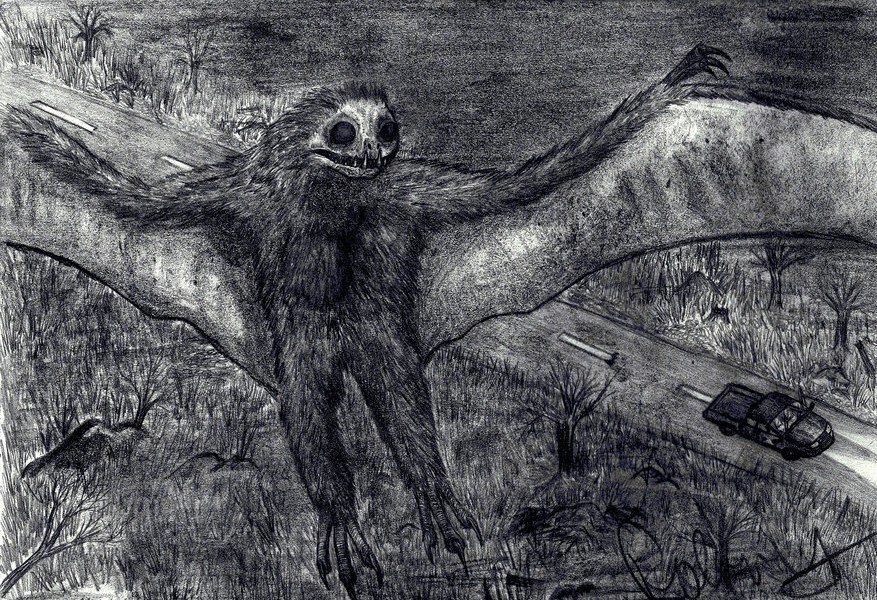
The Mothman Phenomenon: How it has Influenced Popular Culture
The Mothman phenomenon is a long-standing mystery that has been reported in West Virginia since the 1960s. The legend of the Mothman has gained popularity in recent years as more people become aware of its existence and eerie reputation. From books to movies to podcasts and beyond, here's a look at how some modern-day interpretations of the folktale of the monster bird have come to life.
Books:
"The Mothman Prophecies," by John Keel, is the most well-known book about this eerie creature. This 1975 book details many of the strange occurrences reported in the Point Pleasant area, including UFOs, mysterious lights, and other unexplained phenomena. Since then, numerous other authors have written about their own encounters with this cryptid or proposed theories about it. "The Mothman's Photographer" by Jeffrey Wamsley and "Mothman" by Loren Coleman are two notable titles.
John Keel's "The Mothman Prophecies"
This mysterious humanoid figure, popularized in American folklore and sightings in the late 1960s, has captured the imaginations of many. In 1975, John Keel published a book about his journey to uncover these cryptic prophecies that had long perplexed folklorists. This blog post will go over why The Mothman Prophecies have become so famous, what makes them so intriguing, and how John Keel was able to uncover the truth behind them.
First let's look a little into the author's life. John Keel was a paranormal investigator, writer, and journalist best known for his book The Mothman Prophecies, published in 1975. He investigated alleged sightings of a mysterious winged creature in Point Pleasant, West Virginia, between 1966 and 1967. Keel was born in 1930 in New York City and has written over 20 books on paranormal phenomena and cryptozoology, including UFOs: Operation Trojan Horse (1970), Strange Creatures from Time and Space (1970), and Our Haunted Planet (1970). (1971).
Keel's book gained the most popularity after being adapted into a film.
In addition to books on cryptozoology and UFOs (1973), Keel wrote fiction stories such as Death Stalks the Night (1967) and The Shaver Mystery (1968). He died in 2009, at the age of 79, after a long battle with heart disease. His life's work has left an indelible impression on those interested in the paranormal and continues to inspire researchers today.
Now, let's look at why The Mothman Prophecies are so well-known. It all started in 1966-1967 with reports from Point Pleasant, West Virginia of a large humanoid figure with wings flying through town at night. These sightings sparked rumors among the locals that this creature possessed supernatural abilities and could predict disasters. While these stories were never proven true or false, they persisted over time, thanks in part to the release of films such as The Legend of Boggy Creek (1972) and The Mothman Prophecies (2002).
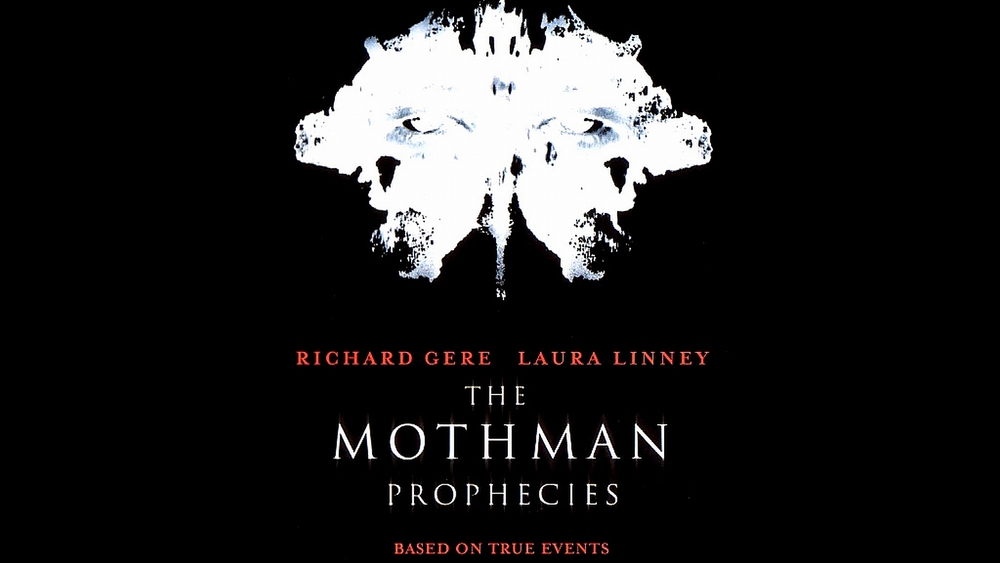
Since its publication in 1975, John Keel's book has been regarded as one of the most comprehensive studies on The Mothman Prophecies. He spoke with hundreds of witnesses and investigators who claimed to have seen or heard about Mothman before his book was published. He was able to make sense of this phenomenon and reveal some interesting details about its origin story thanks to his investigative skills and unique insights into cryptozoology. For example, he discovered that many people had similar experiences before witnessing Mothman fly by; he also discovered that there were multiple creatures like Mothman spotted near Point Pleasant during this time period - not just one!
So, what exactly draws you in to The Mothman Prophecies? For starters, despite numerous accounts from eyewitnesses over 50 years ago, there is still no concrete proof that it exists. Many people believe it is more than just a mythological creature; some believe it is an extraterrestrial being or even a sign from God! Furthermore, there are several theories as to why it may have appeared in Point Pleasant during those years, ranging from paranormal activity to a botched government experiment. All of these possibilities make for an interesting read and add to the mystery surrounding this strange enigma.
Finally, let's talk about how John Keel was able to uncover the truth behind The Mothman Prophecies in 1975, when there was very little information on the subject, and how we now know a lot more as a result of his research efforts! His method included extensive witness interviews as well as research into local legends and folklore concerning cryptids such as Bigfoot or the Chupacabra. He also personally visited locations associated with reported sightings and analyzed police records for any other potential clues, which eventually led him to discover patterns between events reported before/after a sighting occurred, as well as possible connections between apparitions experienced by multiple people at the same time! Finally, all of this information helped him paint a clearer picture of what was going on here - something far beyond earthly explanations...
Overall, John Keel's book The Mothman Prophecies has given us a better understanding of this mysterious creature that has been popular in American folklore for decades. He was able to piece together an intriguing narrative by combining extensive interviews with witnesses, local legends, and historical records, which continues to fascinate readers young and old today! So, if you're looking for a unique mystery story, read this classic - you won't be disappointed!
Movies:
"The Mothman Prophecies," based on John Keel's book, was released in 2002 and starred Richard Gere as a reporter who investigates reports of supernatural activity in a small town in West Virginia. Although some details of the story were changed for the film adaptation, many of Keel's original account were preserved. This film piqued the public's interest in the subject, leading to an increase in the number of people attempting to discover what lies behind these creepy stories. Another recent feature film, simply titled "Mothman," revolves around an ex-convict who becomes involved in an investigation into strange sightings near his hometown.
TV Shows & Podcasts:
Supernatural and Unsolved Mysteries have both devoted episodes to the legendary creature (which also featured an episode on the original 1966 incident). Additionally, several podcasts, including Cryptonaut Podcast, Mysterious Universe Plus+, and Monsters Among Us - All Things Weird & Strange!, are devoted primarily to discussing all things related to the Mothman. The latter podcast even takes listeners on virtual tours of various locations associated with the story, such as Trenton Bridge or TNT area, where people claim to have seen strange creatures flying in the night sky during the mysterious events that occurred there in 1966/1967.
Overall, it is clear that popular culture has embraced the story of The Mothman, with everything from books to movies to podcasts exploring different aspects of this mysterious entity. It appears that we will continue to hear about this fascinating subject for many years to come!
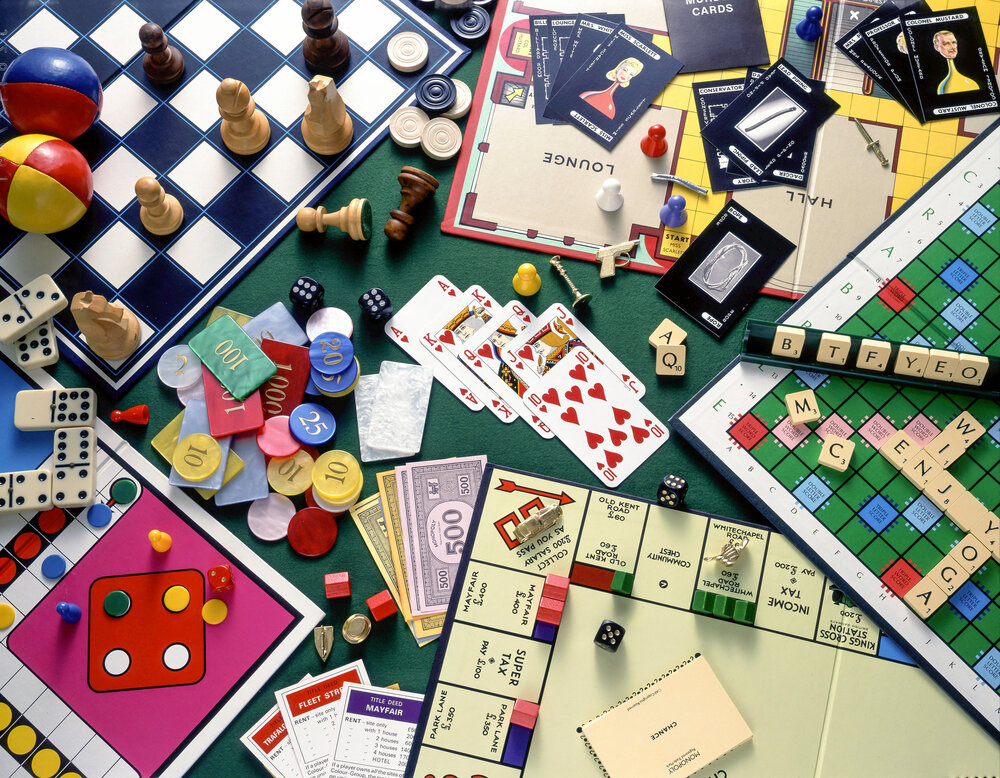
It can be difficult to find quality time for our families in our hectic, fast-paced lives. However, playing some fun and exciting games is one of the best ways to spend more time together! There are plenty of great options out there if you're looking for a fun game night activity or something to do during family movie night. Here are five fantastic games that you and your family can enjoy together:
1. Scrabble: A Classic Board Game with Lasting Appeal

Since its initial release in 1938, Scrabble has entertained and captivated audiences, and its popularity has never waned. It's a board game that puts players' linguistic skills to the test by having them form words from randomly placed letters to increase their score. It's a great way to spend quality time with family members while also improving your vocabulary and decision-making skills.
Scrabble's rules have remained largely unchanged since its inception, with a few minor variations over the years. The goal of the game is for each player to form words on the board using their seven letter tiles. Players can increase their score by placing tiles on premium squares such as double letter or triple word score spaces. Furthermore, players can challenge one another's words if they believe they are incorrect; this is referred to as challenging an opponent's play. The game ends when all of the tiles have been used up, and the player with the most points wins!
Scrabble is not only entertaining and fun, but it is also educational! It promotes the acquisition of new vocabulary by constructing words on the board that you may not know or be familiar with yet. It teaches players how to think strategically about their next move by making use of special score squares for maximum effect, ultimately forcing them to think "outside the box" in order to win. With so many people trapped inside due to current events, Scrabble is a great way for families and friends to pass the time!
Scrabble has provided countless hours of entertainment for generations of players all over the world for over eighty years. This classic board game will always be a hit amongst all ages, whether you're playing against close friends or family members who live far away via online platforms such as Words With Friends - which is based on classic Scrabble!
2. Charades: The Name Speaks For Itself
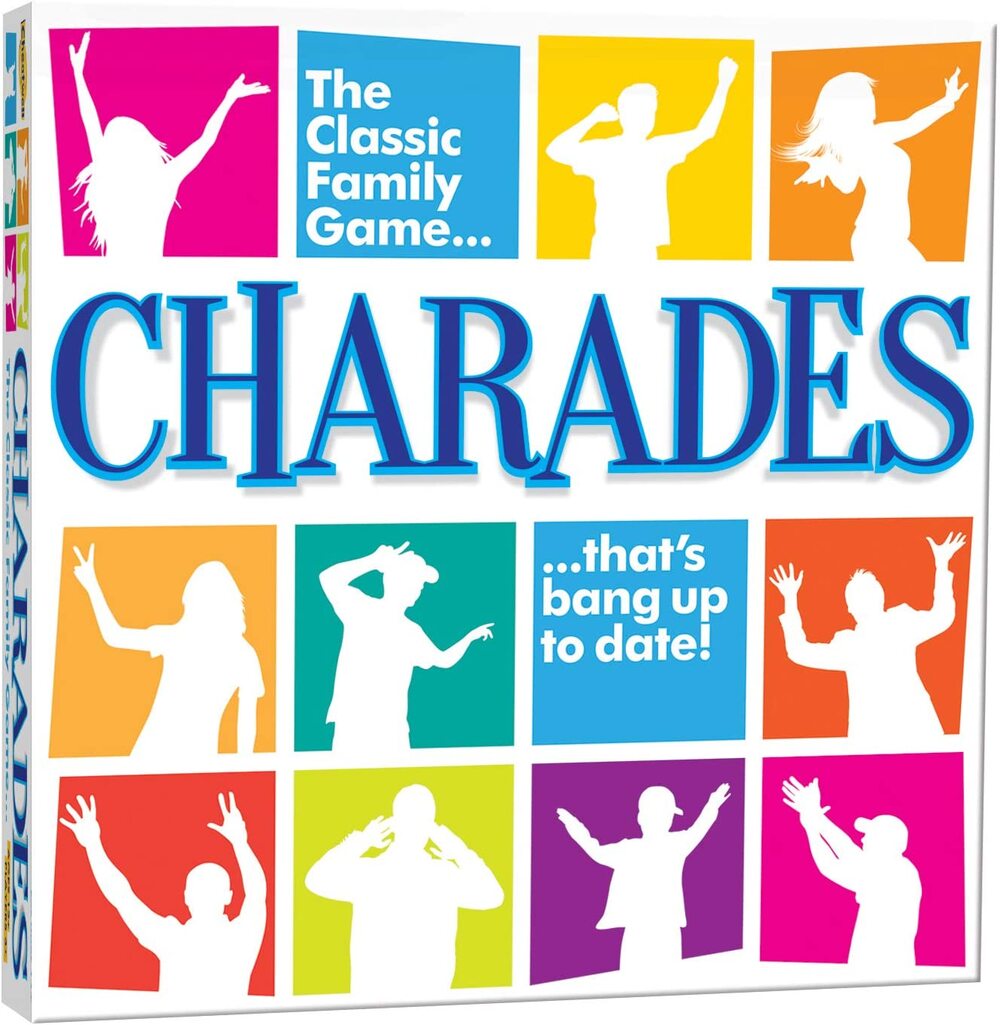
Charades is a classic party game that is still fun and entertaining for groups of all sizes. To join in the fun, all you need is your wits, creativity, and a few friends. The rules are straightforward: each team or individual takes turns acting out clues while their opponents attempt to guess the word or phrase they are attempting to convey. Famous people, quotes, books, movies, songs, and other items can all be used as clues! Everyone will have plenty of chances to act out their clue and earn points for correctly guessing.
Charades is ideal for family gatherings or casual parties because it allows people of all ages to participate without requiring any supplies. It allows people to let their hair down and express themselves creatively through gestures and facial expressions. As an added bonus, there is no time limit for playing - the longer it goes on, the more laughs everyone is sure to have! Plus, with an infinite number of topics to choose from, you'll never run out of things to guess. So, why not bring this tried-and-true classic to your next gathering? You won't be sorry, I promise!
3. Taboo: This Can Be a Good Thing
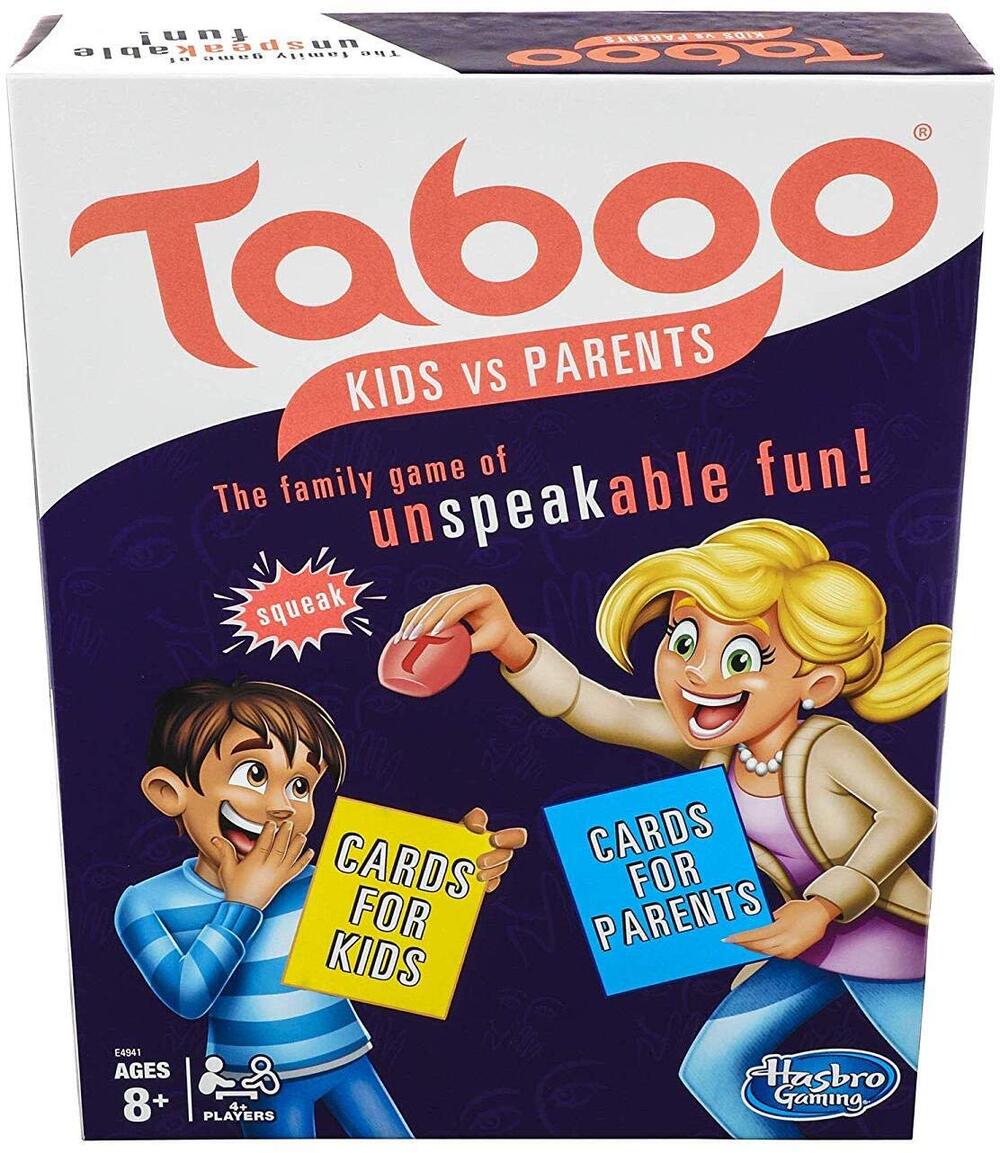
It's no surprise that Taboo is quickly becoming one of the most popular party games. With the release of its own board game version, it has become even more accessible to players.
The game is simple, but incredibly difficult: a player must guess a word using clues provided, but not the forbidden words associated with that clue - all in a short amount of time. To get it right, quick thinking and wit are required! If you think you're up for a challenge, this game might be for you.
It's a fast-paced game that isn't for the faint of heart; each round can quickly become exciting as people try to guess faster than anyone else at the table. Taboo, on the other hand, is definitely worth considering if you're looking for something new and exciting to try out with friends or family members! The game's fast pace and challenging nature make it ideal for those who enjoy a little friendly competition while having fun.
So, the next time you're planning a gathering, why not try Taboo? It could easily become your new favorite party game!
4. Monopoly: A Classic Game Still Relevant Today

Monopoly is a classic board game with an interesting history that has been popular for decades and continues to be popular today. The game is based on purchasing properties, rolling the dice, collecting rent, and eventually leaving only one person victorious. Although it appears to be a simple game, it can become quite competitive.
Monopoly's main goal is to amass a real estate empire while bankrupting your opponents. To move around the board, collect money, or pay fines, players roll two dice. You can buy properties like St. James Place or Park Place depending on where you land; if another player lands on it, they must pay you the amount determined by their roll. However, as with any game of chance, luck plays a significant role in how much money you make or lose!
Despite some changes over the years, people still flock to the original Monopoly for some good old-fashioned family fun. Its intense gameplay mechanics have even earned it a reputation for causing schisms between siblings! That could explain why this classic game is still popular after all these years!
Monopoly is an excellent choice for those looking for something nostalgic while also challenging. Just remember to keep things friendly and have fun - after all, no one likes a grumpy loser...
5. Additional Games to Consider
Cards Against Humanity: An Irreverent New Card Game
Our fifteen-year-old nephew introduced us to a new card game at one of our recent family gatherings, and it has since become a hit among us. Though this game contains raunchy and adult content at times, it guarantees hours of laughter if everyone playing is comfortable with such topics.
The game consists of hundreds of cards with various witty jokes on them (and occasionally offensive statements). It puts players in compromising situations they never expected to be in, which is what makes it so hilarious! From ridiculous scenarios to opponent banter, you're sure to have a good time as you work your way through the deck.
The rules are straightforward: each player takes turns drawing cards from the deck and following the instructions on the backs of them. Players can also engage in conversations about their cards, allowing others to comment or add context. This adds a layer of levity for everyone at the table!
Whether you're looking for a fun night in with friends or family, this irreverent card game will not let you down! So why not give it a shot and prepare to laugh?
20 Questions: Question-and-Answer Fun
Are you looking for a simple and enjoyable game that requires little preparation? Then look no further than the exciting question-and-answer paper game! Your next gathering can be filled with laughter, challenge, and friendly competition with just a few pieces of paper and pens or pencils.
To begin, write down 20 questions on different pieces of paper. You can use our pre-made downloadable question cards with age-appropriate topics such as animals, geography, history, science, movies/TV shows, sports trivia, and so on. Divide the players into two teams and determine the value of each correct answer (1 to 5 points are recommended).
The first team then selects one of the questions and attempts to correctly answer it in order to earn points. If, after some discussion among team members, they do not know the answer, it is passed on to the other team, who also attempts to answer it correctly in order to obtain their own set of points. The process is repeated until all questions have been answered or the time limit has been reached. The team with the most points at the end of the game wins!
So gather your friends and family for a fun night of question-and-answer fun! There is something for everyone, young and old - exercise your mind while having fun with this simple yet exciting paper game!
Pictionary: A Creative Twist on Charades Where You Draw Instead of Act!
Gather your friends and family for an evening of charades with this creative twist. Teams will draw the words or phrases instead of acting them out! All you need to get started is a drawing surface (we recommend large poster boards), markers, colored pencils, or crayons, and plenty of paper for correctly guessing words/phrases.
Determine who will go first and have them choose a phrase or word to draw. The team is then given two minutes to draw the phrase as accurately and creatively as possible without revealing what it is. After the timer runs out, swap places so the opposing team can guess what was drawn. Points are awarded if they correctly guess!
Play rounds until one team reaches a certain number of points and is declared the winner! This original take on charades encourages creativity while keeping everyone entertained. So gather your materials and prepare to have some competitive drawing fun! Everyone enjoys drawing! Use this twist on charades to get creative by having teams draw pictures instead of acting them out in order to guess a word or phrase. All you need to play is something to draw on (we recommend large poster boards), some markers, colored pencils, or crayons, and plenty of paper for correctly guessing words/phrases!
Uno: A Classic Card Game That Never Gets Old
Uno has been a favorite game of many people all over the world for many years. It's simple to pick up and play with only one deck of Uno cards per player. Each player is dealt four cards at the start of the game. Players take turns attempting to discard all of their cards before anyone else by matching the colors or numbers on the table pile with those in their hand. To win a round, someone must yell "Uno" before anyone else notices when they play their final card.
Merle Robbins invented the card game Uno in 1971. The game's original name was "Wild and Crazy Guy," but it was changed to Uno, which is the Italian word for "one," to reflect the game's goal of being the first player to get rid of all their cards. The first version of Uno, made of only a few pieces of colored paper, was sold out of Robbins' barbershop in Reading, Ohio. The game quickly gained popularity and was purchased by Mattel in 1992. With millions of copies sold in over 80 countries, Uno has become one of the most popular card games in the world.
What truly makes Uno so enjoyable is its ability to bring people from all walks of life together; young or old, novice or expert, there isn't a single person out there who wouldn't enjoy this classic card game at least once! Even though it's simple and straightforward, each new round brings something new and exciting for everyone involved, making it fun and exciting for everyone.
Uno is sure to provide hours upon hours of entertainment no matter how many times you've played it, whether you're looking for something lighthearted and casual for your family night or an intense and competitive group activity among friends! So why not gather a group of friends and try out this classic card game? We promise you will not be disappointed!
Trivial Pursuit: Put Your Knowledge to the Test with This Classic Board Game
Are you a fan of knowledge-based board games and trivia? Are you looking for something to do with the family on game night? Look no further than this classic board game to put your knowledge of random facts from various categories to the test! Everyone, young and old, is welcome to participate.
This game is simple to play: choose a category (history, science, and nature, for example), roll the dice, and move around the board answering questions about that topic. The first player to reach the end square wins! It's not only a great way to have fun and compete with one another; it's also an educational experience. Kids can learn more about various topics while having hours of fun. Adults, on the other hand, can brush up on random facts or learn something new.
So, why delay? Gather the family for an evening of learning and fun with this classic board game - put your skills to the test today!
Clue: Unravel the Mystery at Your Next Game Night
Looking for a unique way to spice up your next game night? Do you want something that promotes deductive reasoning and problem-solving? Clue is the ideal game for you!
Clue has been around since 1949 and is still as popular today as it was then. Anthony Pratt's classic board game challenges players to use their wits and detective skills to figure out who did it before someone else does. Players must move around the board to collect clues from various rooms of a house. They must determine which weapon was used, who committed the crime, and where it occurred during this process. The first player to correctly answer all three questions wins the game!
Playing Clue helps both adults and children improve their creative problem-solving skills and deductive reasoning abilities. To come to conclusions about what happened in the mystery, careful observation of details combined with logical thinking is required. And because there are so many different ways to solve the mystery, no two games will ever be exactly alike!
So, instead of settling for a routine game night, take your family or friends on an exciting journey of deduction with Clue! With its engaging gameplay and intellectual challenge, you'll all enjoy working together to solve the mystery. Who knows, you might even discover some hidden talents along the way!
Jenga: An Exciting, Strategic Game
If you're looking for a fun game that requires strategy and luck, Jenga is the game for you! This classic game is enjoyed by people of all ages because it requires players to carefully stack wooden blocks in an ever-growing tower.
Jenga can be played with two to twenty people — the more the merrier. Each player takes turns removing one block at a time from the tower and placing it at the top while preventing the entire structure from collapsing. The tower grows taller and taller with each round, creating tension and suspense until it finally topples over! The person whose turn caused the tower to collapse is defeated.
Leslie Scott invented the game in 1974, while she was living in Ghana. She began by assembling a tower out of her children's wooden blocks that could be disassembled without completely destroying it. When it was released commercially in 1982, it quickly became a popular family pastime and achieved worldwide success.
Jenga is not only a fun activity for both children and adults, but it is also a great way to spend time with friends or family this holiday season (or any time of year). The possibilities are limitless — why not give it a shot right now?
As I previously stated, this list contains five enjoyable games to play on family game nights (plus a couple of others to keep things interesting). Enjoy!
Are you still here? Then enjoy this special bonus! I asked my kids to make a list, which, as you can imagine, grew and grew and grew. When we were finished, I had something similar to what you see here, plus some family-specific variants that felt like work describing, so I chose the first five. Three of the games were from one of my children, and the other two were from the other; to avoid favoritism, they were rotated until everyone was satisfied. And now I've been typing for what feels like hours, or perhaps hours.:) Here are a few more that didn't make the final cut but are still a lot of fun to play.
- Codenames - This word-based game is ideal for larger groups of four or more players (ages eight and up). The objective is straightforward: two teams compete to guess their secret codewords before their opponents do. With 200 double-sided cards included in each box, this game will provide hours of entertainment with limitless combinations!
- Spot It! - This no-setup matching game is ideal for small groups of 2-8 players (ages 7+). Players must keep an eye out for matching symbols on the cards as they compete to see who can spot it first! Each card contains eight different symbols, making it an excellent way to improve visual perception skills.
- Disney Villainous - This epic strategy game for up to 6 players (ages 10+) will delight fans of iconic Disney villains. Choose from six classic villains such as Maleficent, Jafar, and Ursula as you race across three realms—Castle Beyond the Goblin Forest, Agrabah, and Pride Lands—to ultimate victory!
- Catan - This popular board game is a strategy fanatic's favorite (ages 10+). This competitive 3-4 player game promises plenty of excitement as players vie for control over an ever-changing island landscape with its clever combination of resource gathering and trading elements. Bring it out on those long winter nights when your family is looking for something entertaining but not too complicated!
Whatever you choose, playing these games with your family will undoubtedly create lasting memories that everyone will cherish for the rest of their lives. So gather your decks and prepare for some serious bonding time with these five fantastic games!
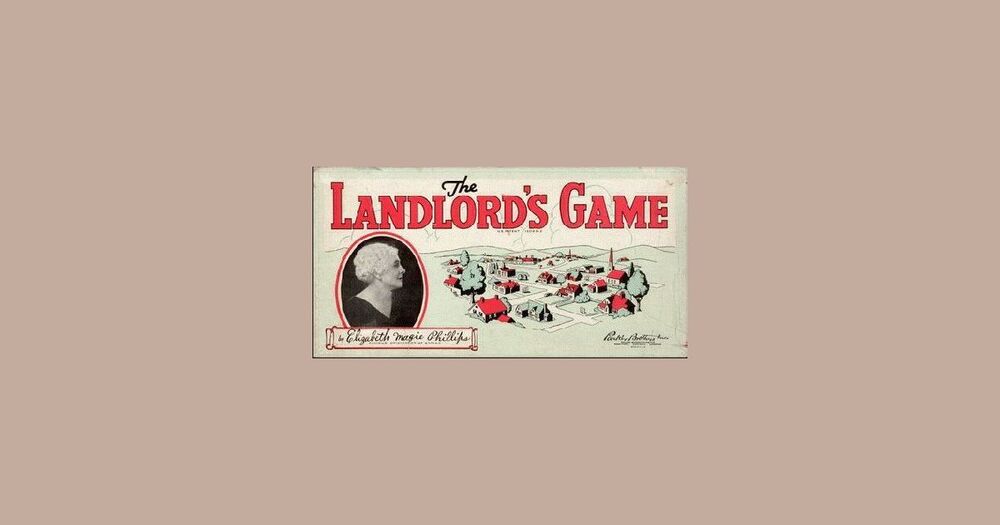
The classic board game Monopoly has been entertaining generations of people for over a century, with its iconic tokens and rules that have become part of our culture. But where did this iconic game come from?
Originally created in 1903 by Elizabeth Magie, a feminist, author, game designer, inventor, and Quaker from Maryland. The Quakers from Maryland were a religious group of people who followed the teachings of George Fox and established the Religious Society of Friends. They believed in the importance of equality, simplicity, and peace. In 1680, two Quaker immigrants arrived in Maryland and organized a meeting house in Somerset County. From there, many more followers joined their cause. The Quakers spread throughout Maryland and helped to establish churches in various towns. Today, some still practice the same principles they did centuries ago and many others have become well known for their humanitarian efforts.
Magie was an advocate of Georgism, an economic theory which argues that land should be owned collectively by society with individuals paying rent back to the community. Her game has been credited with inspiring the much more popular Monopoly board game that we know today. Magie intended it as a way to demonstrate how monopolies can lead to wealth inequality.
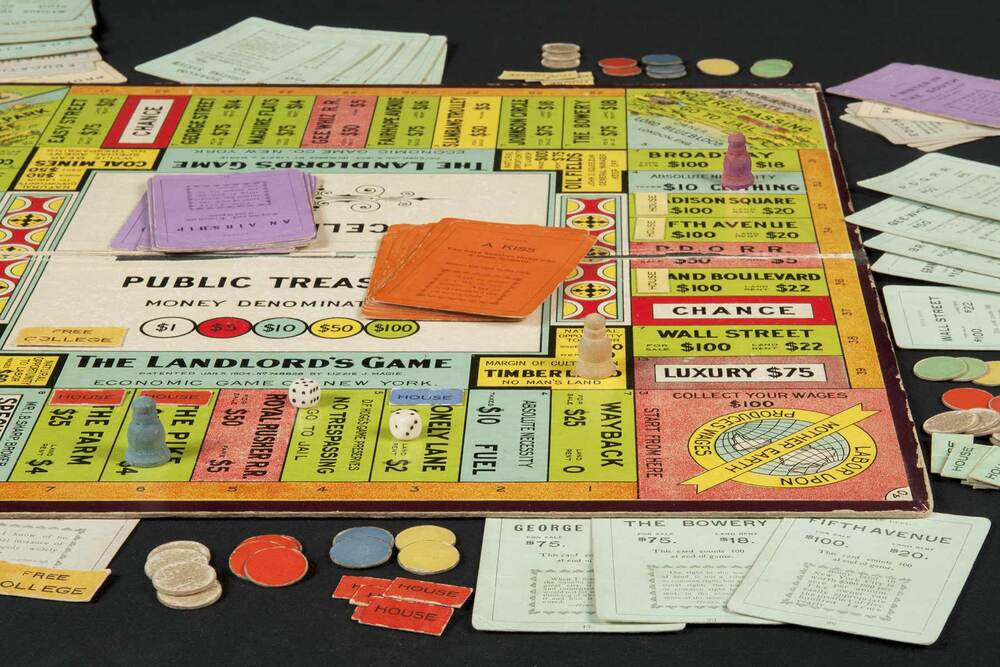
The original version of Monopoly was called The Landlord’s Game. Its purpose was to show the evils of land grabbing and monopoly control as experienced under capitalism. She patented the game in 1904, but it was not until 1935 that it was purchased by Parker Brothers who changed the name to Monopoly and popularised the game all over the world.
Parker Brothers is one of the oldest and most successful board game companies in history. Founded in 1883 by George S. Parker. He was born in Salem, Massachusetts and is known as one of the earliest entrepreneurs in the gaming industry. His first game, Banking, was created out of his own necessity for a cheap form of entertainment for himself and his family. George was always looking for ways to improve existing games or to create new ones with interesting concepts, and he eventually built a thriving business from it. He also devoted much of his time to philanthropy and education, setting up funds to help those less fortunate than him and donating large sums of money to Harvard University. He passed away in 1952 but his legacy remains through the company that he created over 135 years ago.
The company has produced numerous classic games such as Monopoly, Clue and Sorry!, which have become staples in many households around the world. In addition to these beloved titles, Parker Brothers has also created and sold a vast array of other popular games such as Trivial Pursuit, Scrabble and Risk. Over its long history, the company has greatly contributed to the growth of family gaming, bringing people together for countless nights of enjoyable entertainment.
Parker Brothers made some changes to Magie's original rules when they acquired The Landlord’s Game; they removed references to landlords and instead focused on creating a fun competition between players. They also added tokens such as thimbles, bootscooters, hats and ironing boards which became an integral part of Monopoly as we know it today. Despite these changes, certain rules remain very similar; players are still able to Mortgage properties they own in order to raise money and collect rent on them later on. Similarly, there is an emphasis on building hotel empires while making sure not to get bankrupted in the process - all elements that have helped keep Monopoly fresh over the last 100 years or so.
Monopoly has gone through numerous iterations since its introduction in 1935; with a variety of different editions released featuring theme-specific editions such as Star Wars or Marvel Super Heroes along with various localised versions for countries around the world. In recent years new technological advancements have allowed for digital versions of Monopoly that can be played online or via apps on phones & tablets giving anyone access to this classic game no matter their location.
So regardless if you play using traditional methods or through modern technology one thing is sure; a good game of Monopoly will always provide hours upon hours of entertainment!














